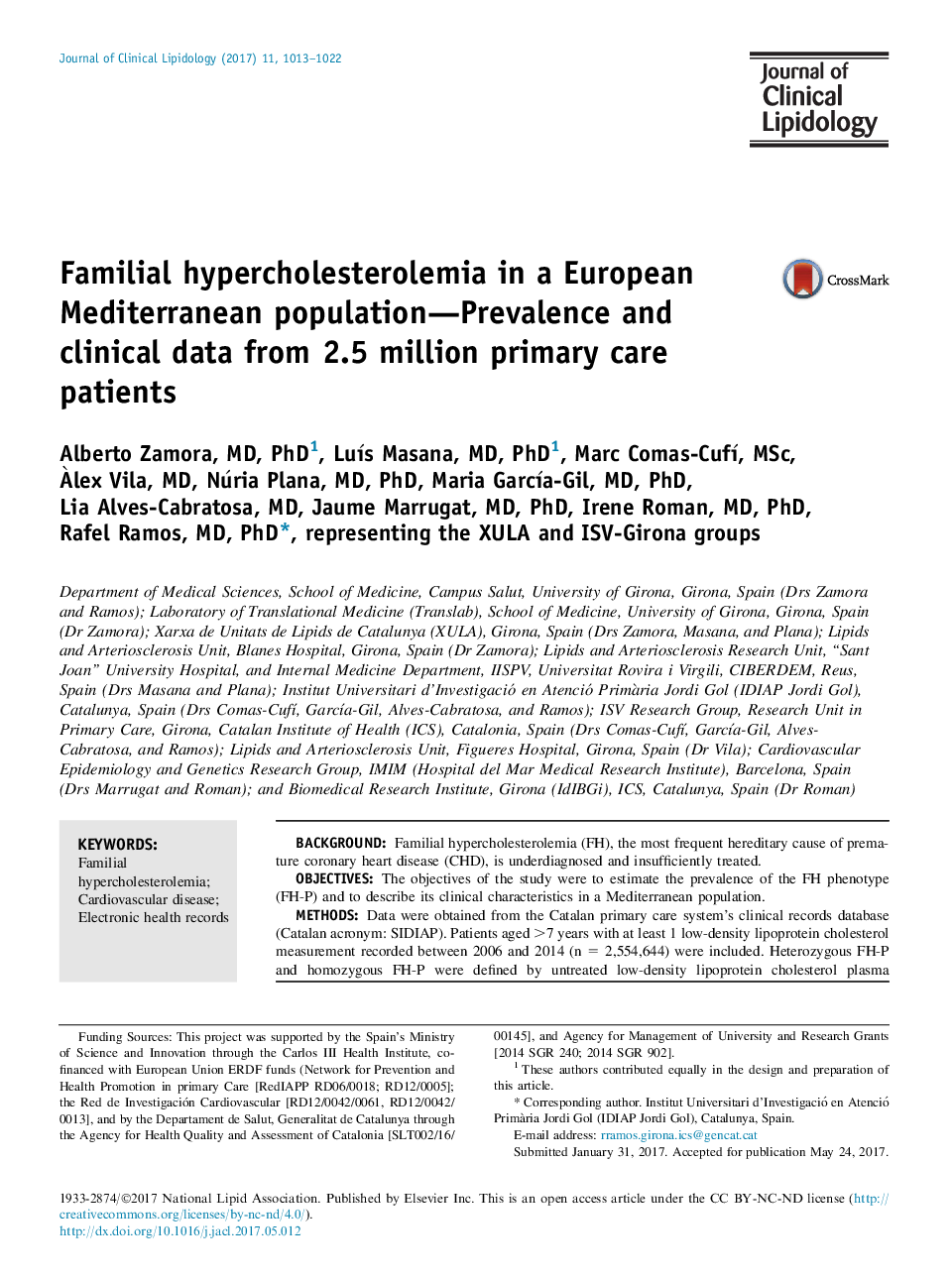| Article ID | Journal | Published Year | Pages | File Type |
|---|---|---|---|---|
| 5615242 | Journal of Clinical Lipidology | 2017 | 10 Pages |
â¢Familial hypercholesterolemia phenotype is present in 1 of 192 persons in Spain.â¢One in 217 children aged 8 to 18 years presents familial hypercholesterolemia phenotype.â¢Vascular diseases strongly associate with familial hypercholesterolemia phenotype.â¢Treatment of patients with familial hypercholesterolemia phenotype is suboptimal.â¢Treatment of dyslipidemia is suboptimal, especially in women and in young patients.
BackgroundFamilial hypercholesterolemia (FH), the most frequent hereditary cause of premature coronary heart disease (CHD), is underdiagnosed and insufficiently treated.ObjectivesThe objectives of the study were to estimate the prevalence of the FH phenotype (FH-P) and to describe its clinical characteristics in a Mediterranean population.MethodsData were obtained from the Catalan primary care system's clinical records database (Catalan acronym: SIDIAP). Patients aged >7 years with at least 1 low-density lipoprotein cholesterol measurement recorded between 2006 and 2014 (n = 2,554,644) were included. Heterozygous FH-P and homozygous FH-P were defined by untreated low-density lipoprotein cholesterol plasma concentrations. The presence of cardiovascular diseases and risk factors was defined by coded medical records from primary care and hospital discharge databases.ResultsThe age- and sex-standardized prevalence of heterozygous FH-P and homozygous FH-P were 1/192 individuals and 1/425,774 individuals, respectively. In the group aged 8 to 18 years, 0.46% (95% confidence interval: 0.41-0.52) had FH-P; overall prevalence was 0.58% (95% confidence interval: 0.58-0.60). Among patients with FH-P aged >18 years, cardiovascular disease prevalence was 3.5 times higher than in general population, and CHD prevalence in those aged 35 to 59 years was 4.5 times higher than in those without FH-P. Lipid-lowering therapy was lacking in 13.5% of patients with FH-P, and only 31.6% of men and 22.7 of women were receiving high or very high-intensity lipid-lowering therapy.ConclusionPrevalence of FH-P was higher than expected, but underdiagnosed and suboptimally treated, especially in women. Moreover, treatment started late considering the high CHD incidence associated with this condition.
